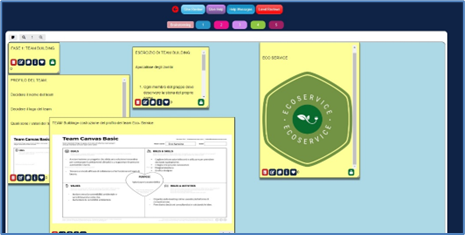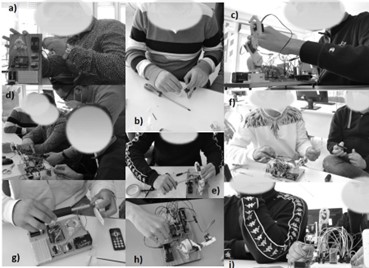
Description of the course
The course focuses on a contextualized delivery of fundamental issues stemming from physics, mathematics, and coding. The course deploys problem- and project-based learning design. It aims to develop new skills, introduce opportunities for students to experiment, create, and prototype models, provide feedback, and encourage reflection and reflection redesign for achieving better results. Through well-planned educational robotics activities students learn not only to build a robot to solve a problem, but plan their actions, perform tests, work collaboratively with each other, and develop higher-order skills. The course covers electronics fundamentals with Arduino® coding, robotics construction through 3D design, and development of an application idea and working through the set of critical points for the application chosen.
The continuous evolution of educational approaches and the ever-increasing complexity of real-world issues that today’s students are expected to face in the future naturally leads to the need for educators to revise learning methods, especially in fields such as STEM and robotics. This revision incorporates highly acclaimed skills as critical and analytical thinking, independent and collaborative working capacity, and more while preserving a real-world problem-solution perspective. In this context, the main distinctive feature of the course is the integration of design thinking skills into the curriculum. Design thinking is combined with computational thinking to develop higher-order thinking skills enabling students to analyze real-world problems and to synthesize innovative solutions while bringing a new perspective and a solid contribution to strengthening STEM education and increasing scientific literacy.
Rightfully defined as standing at the heart of maker education, design thinking elements are implicitly present in the EduRobot curriculum. The method’s full-fledged and systematic adoption is a natural extension of existing learning practices given its accent on creative and out-of-box thinking and problem-solving.
Description of the participants
The course has been designed to address the needs of diverse user groups at the secondary and higher education level. When the course is delivered to secondary education students, the focus is on background concepts, such as Arduino® platform basics as well as related hardware principles. When it is delivered to higher education students, the focus is on design thinking principles.
A total of 20 students aged 17 – 20 years were engaged in the course in the 2021 – 2022 academic year.
Description of gamified design thinking activities
The objective of course activities was to expose students to design and engineering issues in a balanced manner. Students designed and constructed a robotic arm through the use of 3D printing technology. Underlying concepts related to working with 3D objects and electronics were conveyed early in course.
Once the course goal, namely the robotics arm construction, and auxiliary electronics concepts had been addressed through the number of mini-projects, students were guided in a systematic manner to act like real-life engineers considering the perspective of product, namely robotic arm, users, which was controlled by diverse mechanisms selected in accordance with the expected use.
The ICT-INOV educational platform was deployed throughout the course. Activities were organized in the following steps.
Step 1. Team building.
Students were divided into 4 teams consisting of 5 members. They were invited to select a team name, roles and skills, values, rules of collaboration, and goals in order to start their design thinking process. Students worked on this activity by using a team description canvas.
Step 2: Understanding the problem and the users.
Students were encouraged to do research related to the topic in focus to understand better the general problem and its characteristics. They posted videos, articles, and images describing their findings.
After a deep analysis of the problem, each team described a characteristic user. They used an empathy map describing the user’s thoughts, feelings, visons, environments, and fears.
Step 3: Problem definition.
Students were invited to be specific in the definition of the problem to be resolved at the end of the design thinking process. They defined the problem statement using a who-what-why clause that allowed them to integrate user needs into the description.
Step 4: Brainstorming and ideation.
Students were encouraged to express their ideas, aiming to identify the final solution to the problem in focus through technology and in particular robotics and artificial intelligence as instruments to prevent damage caused by climate change For example, one of the teams built a robotic arm for the automatic control of the ripening level of the fruit.
Step 5: Prototyping and design.
Students designed a prototype using the TinkerCad® environment. Subsequently, they implemented the prototype’s mechanical elements by using a 3D printer and coded its behavior through Arduino® IDE.
Some examples of projects developed by students include:
- Artificial limb. The robotic arm was equipped with tactile and temperature sensors to provide feedback to the user.
- Distantly controlled manipulator for explosives disarming. The robotic arm was equipped with a camera.
- Automatic items sorter. The robotic arm was equipped with an automatic image analyzer.
- Distance surgery assistant. The robotic arm was equipped with precise movement control and human tremor compensating mechanisms.







